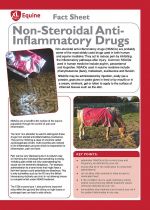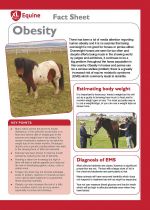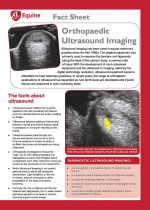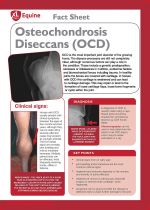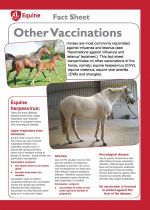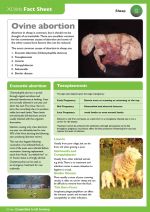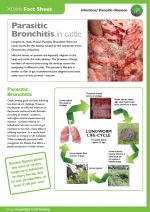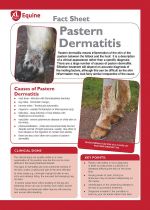Factsheets -
Below are Word and PDF files of our Factsheets. You will need Adobe Reader to view the PDF files - if you need to download Adobe Reader please click here.
Please note: some of these factsheets are several pages long and are large files, so please be patient when downloading!
Non-Steroidal Anti-Inflammatory Drugs
Non-steroidal anti-inflammatory drugs (NSAIDs) are probably some of the most widely used drugs used in both human and equine medicine. They act to reduce pain by inhibiting the inflammatory pathways after injury. Common NSAIDs used in human medicine include aspirin, paracetamol and ibuprofen. NSAIDs used in equine medicine include phenylbutazone (bute), meloxicam, suxibuzone and flunixin.
Obesity
There has been a lot of media attention regarding human obesity and it is no surprise that being overweight is not good for horses or ponies either. Overweight horses are seen far too often and despite efforts being made in the showing world by judges and exhibitors, it continues to be a big problem throughout the horse population in this country. Obesity in horses and ponies can be a serious welfare problem; there is a greatly increased risk of equine metabolic syndrome (EMS) which commonly leads to laminitis.
Orthopaedic Ultrasound Imaging
Ultrasound imaging has been used in equine veterinary practice since the mid 1980s.
Osteoarthritis in Dogs
Osteoarthritis is a debilitating, painful condition
affecting the joints, in which there is progressive
destruction of cartilage and degeneration of all
joint tissues. Arthritis cannot be cured, but it can be
managed very successfully
Osteochondrosis Diseccans (OCD)
OCD is the most important joint disorder of the growing horse. The disease processes are still not completely clear, although numerous factors can play a role in the condition. These include a genetic predisposition, excesses or imbalances in nutrition, endocrine factors and biomechanical forces including trauma. In healthy joints the bones are covered with cartilage. In horses with OCD this cartilage is weakened and can lead to cartilage damage. This may repair or lead to the formation of loose cartilage flaps, loose bone fragments or cysts within the joint.
Other Vaccinations
Horses are most commonly vaccinated against influenza and tetanus (see 'Vaccinations against influenza and tetanus' factsheet.) This fact sheet concentrates on other vaccinations of the horse, namely; equine herpesvirus (EHV), equine rotavirus, equine viral arteritis (EVA) and strangles.
Ovine Abortion
Abortion in sheep is common, but it should not be thought of as inevitable. There are excellent vaccines for the commonest causes of abortion and some of the other causes have factors that can be reduced.
Pancreatitis in Dogs and Cats
The pancreas is an organ involved in digestion.
It produces enzymes which help to digest food
and neutralise stomach acid. Pancreatitis occurs
when the pancreas becomes inflamed. When
inflammation occurs, the digestive enzymes
are released into the pancreas and surrounding
tissues rather than being released into the guts.
This causes severe pain as these enzymes start
to digest the pancreas.
Parasitic Bronchitis in Cattle
Lungworm, Husk, Hoose, Parasitic Bronchitis: there are many names for the disease caused by the nematode worm Dictyocaulus viviparous.
Infective larvae on pasture are ingested, migrate to the lungs and enter the main airways. The presence of large numbers of worms obstructing the airways causes the symptoms in affected cattle. The parasite’s lifecycle is similar to that of gut roundworms and most cases occur in late summer / autumn.
Pastern Dermatitis
Pastern dermatitis means inflammation of the skin of the pastern between the fetlock and the hoof. It is a description of a clinical appearance rather than a specific diagnosis. There are a large number of causes of pastern dermatitis. Effective treatment will depend on accurate diagnosis of the inciting factors, although this can be difficult as the skin inflammation may look fairly similar irrespective of the cause.
